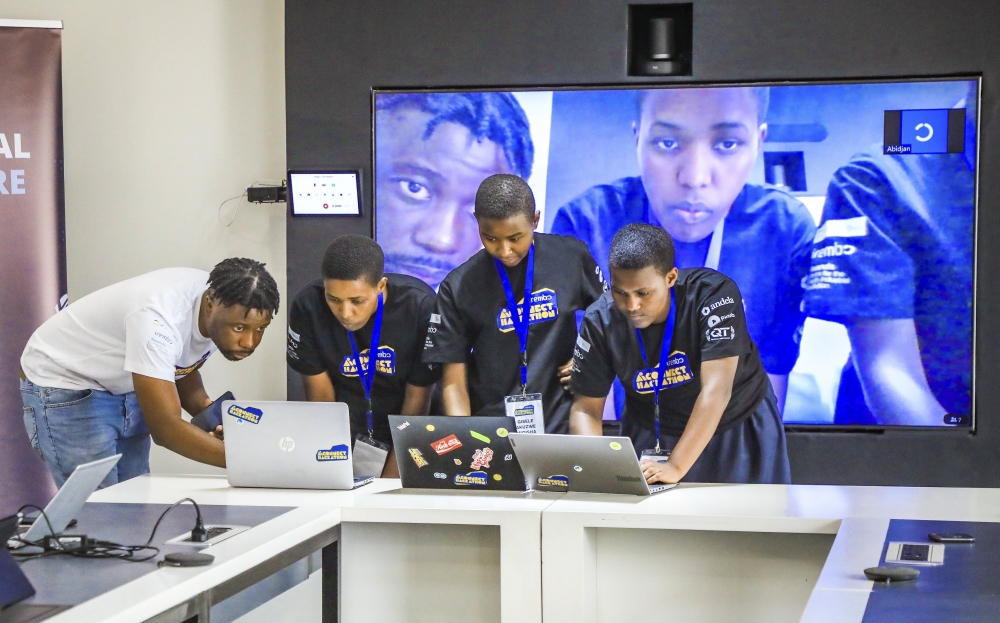

A new World Bank report, released this week, has concluded that we, Africans, are the least skilled workforce globally, and this poses a significant barrier to long-term economic growth.
Yet, the benefits of better and quality education are clear, and even more compelling in the region. Research suggests that while one additional year of education increases earnings by 10 per cent globally, this figure is higher in Sub-Saharan Africa, at 12.4 per cent.
It is not a new revelation that our workforce is the least skilled. We have always known that our education systems have failed to live up to the global standards. They are outdated, offer skills that are not relevant to the job market, and others don’t even offer skills at all, except churning out people who can’t perform any task.
In Rwanda, for instance, a study commissioned by the government a few years ago showed that a student reads 23 words per minute on average, compared to the global average of 60 words.
A teacher in Rwanda reads only 90 words per minute compared to the global average of 120 words. This portrays lack of cognitive ability and comprehension both for students and those who guide them.
There’s a need to accelerate investment in human capital. South Korea has done it, Japan and Singapore have done it too. These investments pay off in the long run but failure to do that even pays off badly.
South Korea's rise from a war-torn nation to an economic and educational powerhouse is often accredited to its outstanding education system. In the 1950’s, it experienced a period of rapid and accelerated economic growth in which the country transitioned from a least developed country into a developed country.
South Korea is now a leader in semiconductors, automobiles, chemicals, telecommunication, and steel industries. It is home to the world’s leading companies such as Hyundai, Samsung, SK Hynix, LG, KT Corporation, Celltrion, and Posco, among others.
The country’s education system has played a crucial role in its rapid industrialisation and economic development. After the Korean War (1950-1953), the government identified education as a key driver for rebuilding the nation and modernising its economy. Significant resources were allocated to building schools, training teachers, and expanding access to education.
But it is vocational training that lifted the country and supported industrialisation. During the 1960s and 1970s, South Korea focused on developing technical and vocational education to meet the demands of its growing industrial sector.
By aligning education with economic goals, South Korea created a workforce ready to support its shift to heavy industries, such as shipbuilding, electronics, and automobiles.
In the 1980s and 1990s, the government shifted its focus to expanding higher education to fuel its knowledge-based economy. Universities received substantial investment, and the number of institutions grew rapidly, leading to a highly educated population.
Not about universities
But it’s not about forcing students to go to universities. Most of the existing universities across Africa are money-minting machines, and we are making a mistake to think that these institutions are the only way out that offer paths to future generations.
Despite lower university attendance, countries like Germany, Austria, Switzerland, Denmark, Netherlands, Australia, and Sweden offer more diverse and practical career opportunities for non-university graduates than countries like the United Kingdom, Canada, and the United States with more university-centric systems.
Granted! Universities support innovation, research, and development, but they can do so if government actively supports and heavily invests in these higher learning institutions.
Countries with competing priorities may not have that opportunity or needed financial resources to actively support universities. Therefore, hands-on skills, acquired through vocational and technical training, shape societies. India has done it.
In 2012, India set out to offer vocational training to more than 500 million of its people by 2022. It seems the country is on track. All global technology powerhouses have presence in India.
Cisco, Google, Meta, Salesforce, Apple, LinkedIn, X, etc, all see India as the world’s fastest growing innovation hub, thanks to the country’s deliberate move to train the next generation of workforce.
Apple is now making its top iPhone models in Chennai and Tamil Nadu, and Intel has nine design and engineering centres in India with 14,000 employees, making it the company’s largest centre outside the US.
Cisco and Salesforce have their second biggest offices in India, Google and Meta are investing in the country heavily, while X and LinkedIn view the country as a major market.
Singapore is another country whose story is fascinating. Open any documentary on YouTube, and search the future of smart cities and urbanisation. Singapore appears on the top list.
Singapore transformed from a small, resource-scarce island into a global economic hub driven in large part by its world-class education system. When Singapore gained independence in 1965, the country’s first prime minister Lee Kuan Yew, prioritised education as key to his country’s prosperity.
The country then implemented policies that focused on building a skilled and adaptable workforce to support industrialisation. In the beginning, the focus was on developing literacy and basic education to support manufacturing. As the economy evolved, its education system shifted toward high-tech industries, finance, and services.
For comparison, South Korea ranks 36, Singapore ranks 42, while Rwanda ranks 144 globally on the UN Human Development Index. This index is actually simplistic since it only ranks countries based on expected and actual years of schooling and educational achievements at all levels.
That means the UN education index only measures the average number of years of education a person can expect to receive, and the average number of years of education a person actually completes. Not the quality of education systems.
More generally, countries whose education systems are based on the principle of meritocracy – where students are rewarded for academic excellence – have succeeded in preparing their future workforce.
This is because the meritocratic system provides pathways for all students to succeed, regardless of their background, through rigorous standardised testing and placement in schools that match their abilities.


